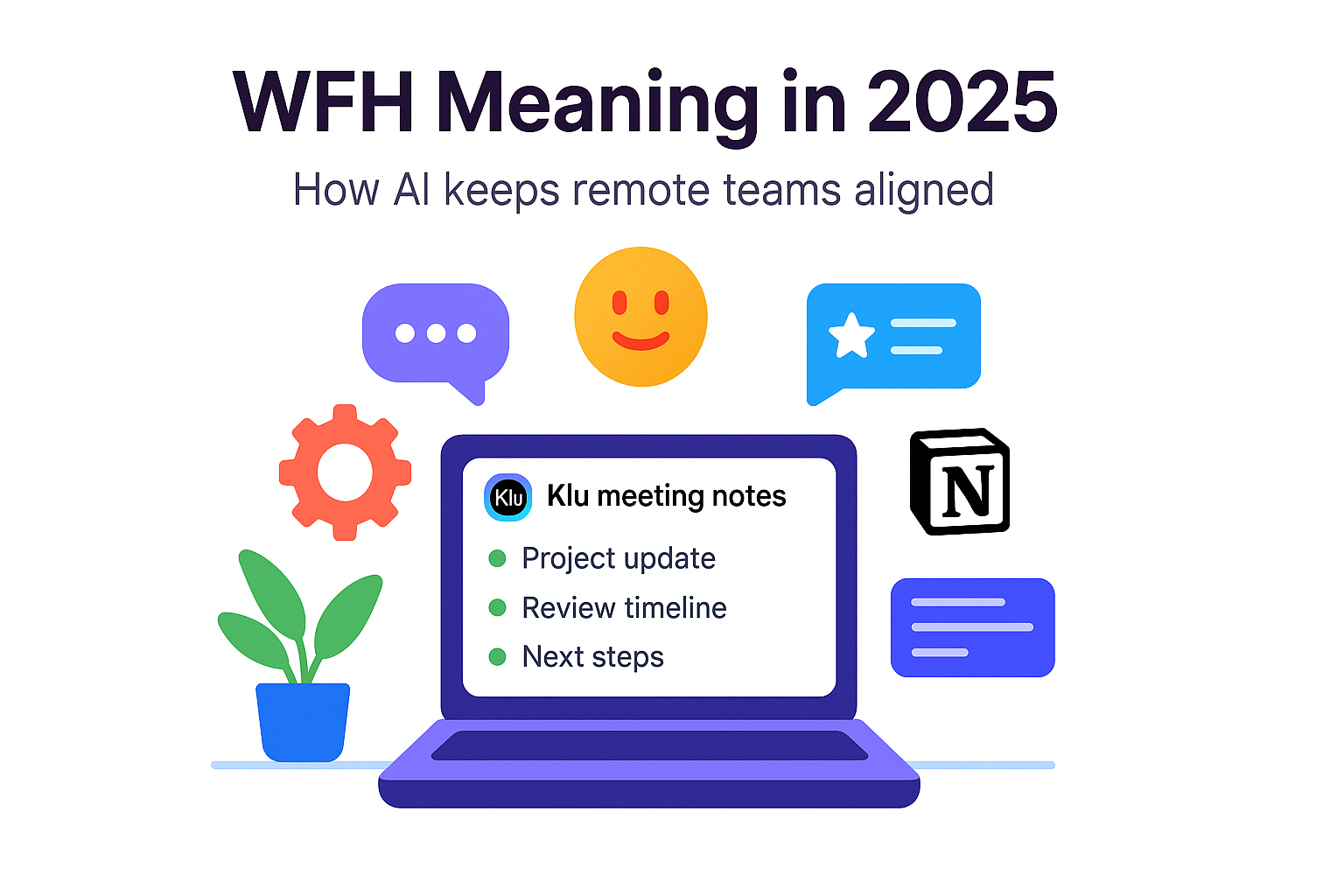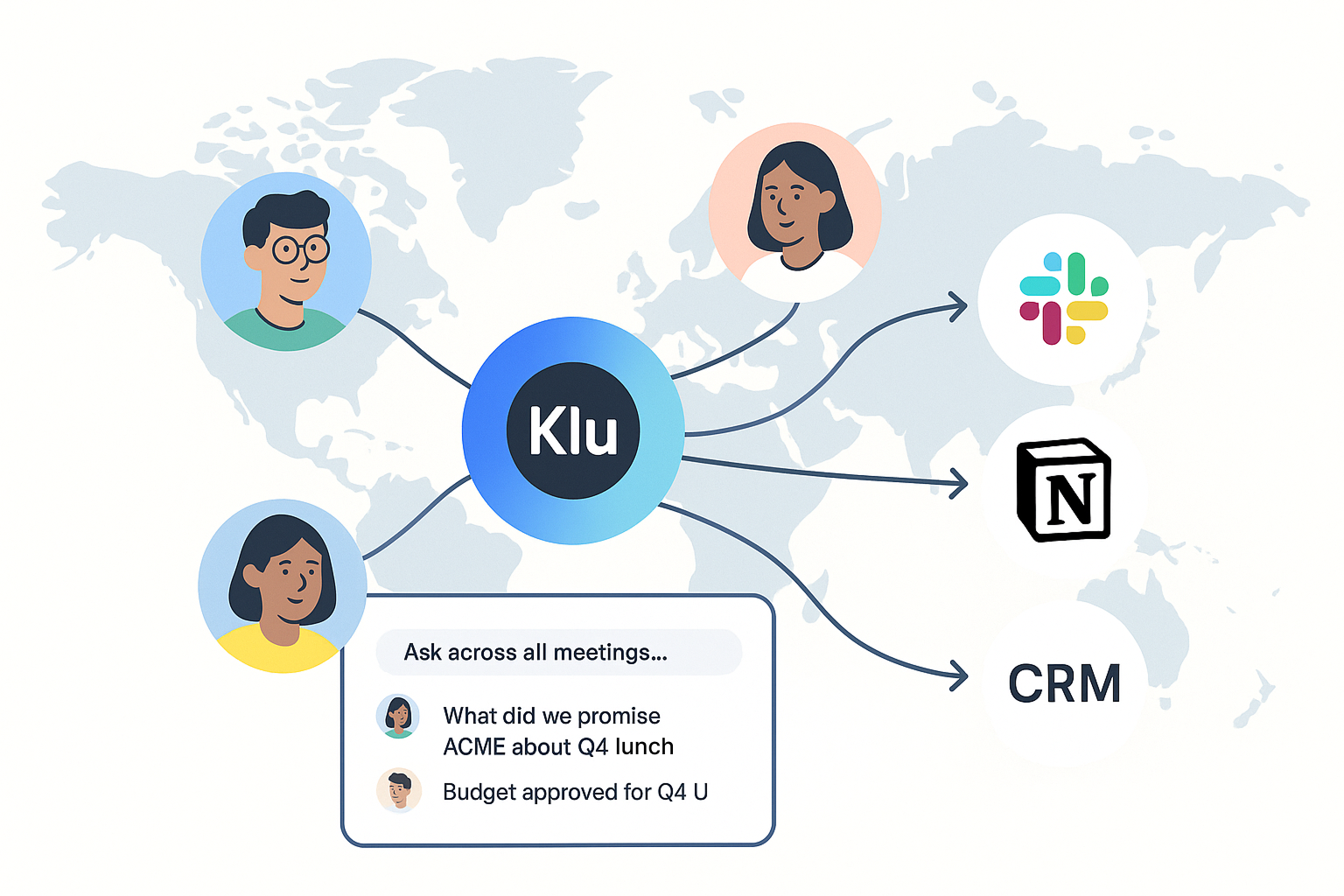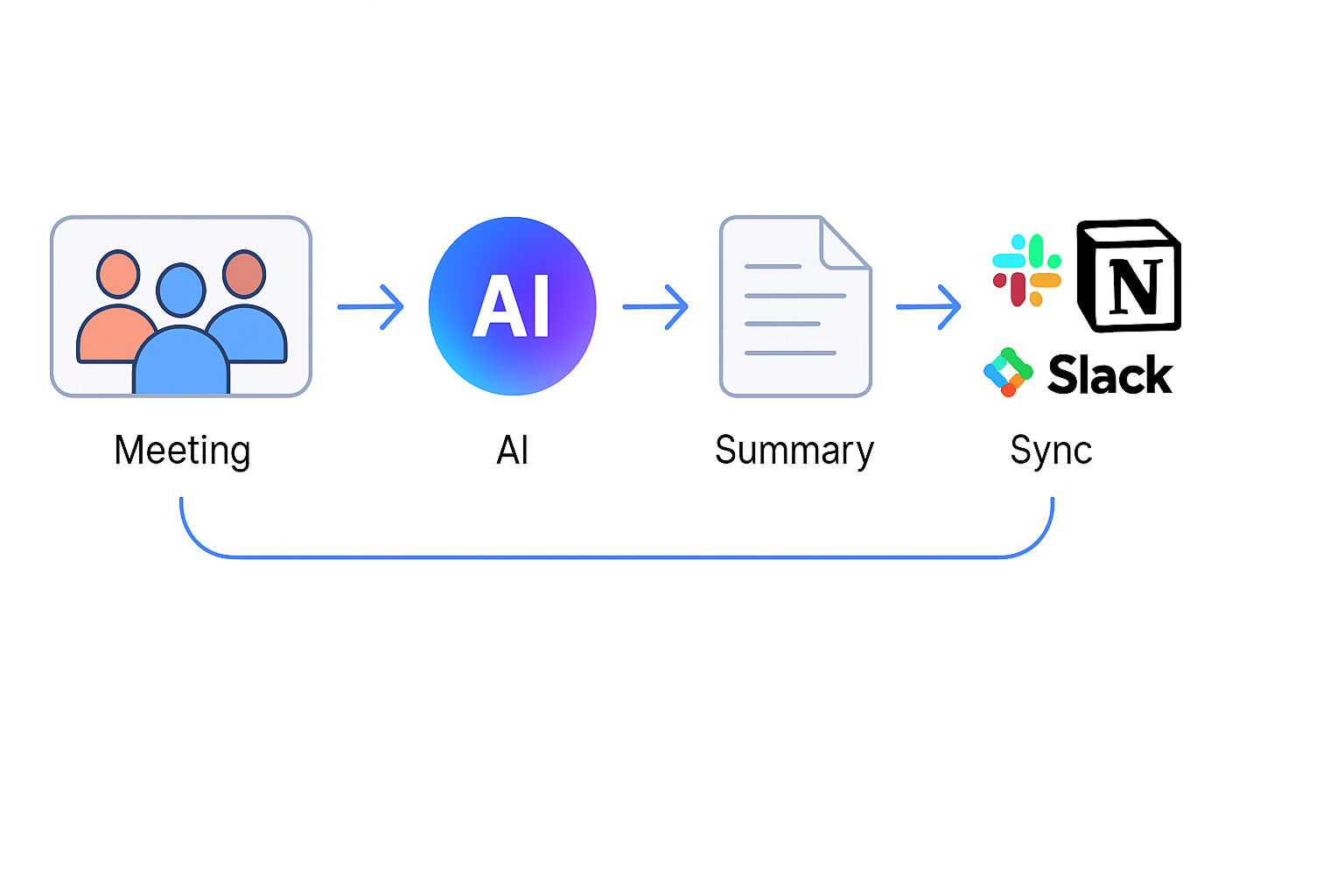 Sami AZ
Sami AZ
The phrase “WFH”, working from home, has evolved far beyond its 2020 pandemic roots. In 2025, remote and hybrid work have become the new default for millions of professionals. Teams are distributed across time zones, yet expected to collaborate as efficiently as if they were side by side.
While the WFH meaning started as a temporary shift to flexible work, it now defines a permanent transformation in how teams communicate, decide, and deliver results. And in this new era, AI collaboration tools, especially those that automate meeting notes, decisions, and follow-ups are becoming essential for keeping teams aligned.
This article explores how AI meeting tools like Klu help remote teams overcome communication gaps, maintain accountability, and stay connected across continents.
WFH used to mean flexibility. In 2025, it means autonomy, trust, and alignment powered by digital systems that bridge the gap between remote and office life.
Companies have realized that productivity is no longer about where you work, it’s about how information flows. According to Gallup’s 2025 report on hybrid work, over 75% of employees in the US are now in some form of hybrid or remote setup. The challenge is no longer whether people are working, but whether teams are working together effectively.
AI plays a critical role in this equation. Meeting intelligence, task automation, and context recall now drive alignment in organizations that no longer rely on physical proximity.
When teams are scattered across locations and time zones, alignment becomes fragile. Common challenges include:
Traditional communication tools (email, Slack, video calls) don’t fix these issues, they amplify them. Each tool captures part of the story but not the whole.
That’s where AI collaboration tools, specifically AI meeting assistants like Klu , redefine the WFH playbook.
AI is turning “remote” into “connected.” Here’s how it helps:
AI assistants join Zoom, Google Meet, or Teams calls, take structured notes, summarize discussions, and list clear follow-ups. Everyone, regardless of time zone, receives the same, objective record of what was discussed.
When meeting summaries and decisions sync automatically into tools like Slack, Notion, or CRMs, everyone stays in the loop. No more guessing what happened on the last call.
AI meeting assistants let people catch up on their own time. A product manager in San Francisco can review a summary from a design meeting in Berlin without attending live.
Advanced AI platforms like Klu’s Deep Dive allow teams to search across every meeting,retrieving commitments, blockers, or project updates in seconds.
AI doesn’t forget who said what. When action items are auto-assigned and tracked, teams develop accountability naturally.

Hybrid work requires balance between flexibility and structure. AI provides both.
A recent MIT Sloan study highlighted that companies with strong meeting intelligence systems saw a 22% increase in cross-team collaboration compared to those without AI automation.

Klu is not just another meeting transcription tool, it’s an AI collaboration layer designed for distributed teams.
For customer success, sales, or project management teams, Klu turns WFH meetings into reliable collaboration systems.
Companies using AI-assisted meeting notes report measurable productivity gains:
These improvements translate into smoother hybrid operations and stronger alignment across teams, clients, and stakeholders.
WFH no longer just means “work from home.” It means working from anywhere, together, with clarity.
AI makes that possible by ensuring that every conversation, task, and follow-up is captured, structured, and shared. The result: no one is left out of the loop, and every team operates with unified understanding.
Teams that adopt AI-powered collaboration tools today are shaping the future of connected work, one automated meeting at a time.
Q1: Does AI make remote meetings shorter?
Yes, by summarizing and automating tasks, meetings focus more on decision-making and less on documentation.
Q2: Is AI collaboration suitable for small remote teams?
Absolutely. Even small teams benefit from structured notes and transparent accountability.
Q3: How does Klu ensure data security?
Klu applies encryption in transit and at rest, follows SOC 2 and GDPR standards, and offers customizable permissions.
Q4: Can AI replace traditional project updates?
AI does not replace communication, it supports it. Automated notes and tasks supplement your team’s workflow.
Q5: Does AI reduce human connection?
No. It strengthens it by ensuring clarity and removing friction from communication, allowing people to focus on meaningful work.
Q6: How does Klu handle different time zones?
AI summaries and synced notes allow asynchronous collaboration, letting every time zone stay informed.
The meaning of WFH in 2025 is no longer about place, it’s about connection, visibility, and shared understanding.
AI collaboration tools like Klu close the gap between time zones, capture decisions, and keep hybrid teams moving in sync. The result is better productivity, stronger alignment, and a sense of teamwork that transcends distance.
Try Klu Free and see how automation-first meeting workflows win in speed and structure.